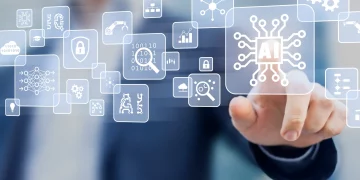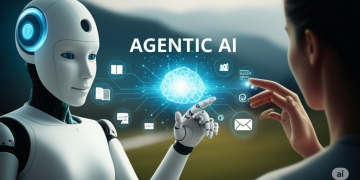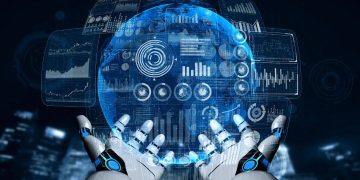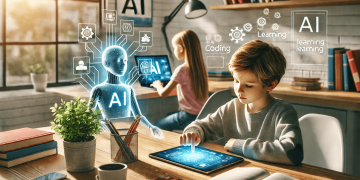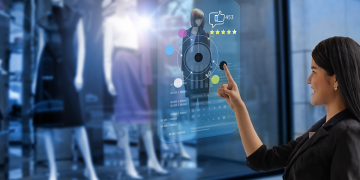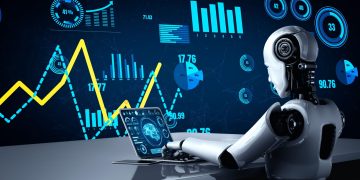As artificial intelligence (AI) moves from experimentation to execution, organizations across diverse industries are leveraging its capabilities to solve real-world challenges, optimize operations, and create new value. These practical implementations offer valuable lessons for enterprises seeking to adopt AI not as a futuristic concept, but as a present-day business tool.
This article explores key AI success stories in multiple industries—including healthcare, finance, retail, manufacturing, logistics, and customer service—and distills the core practices and strategies that make these implementations effective and replicable.
1. Healthcare: Improving Diagnostics and Operational Efficiency
Case: PathAI (United States)
PathAI uses machine learning to assist pathologists in diagnosing diseases from medical images with greater accuracy and speed. Its algorithms reduce diagnostic errors and support early detection of conditions such as cancer.
Lessons for Enterprises:
- Integrate AI where precision and repeatability are critical.
- Use AI to augment, not replace, human expertise in high-stakes environments.
- Ensure datasets are diverse and validated to minimize bias in medical AI applications.
Best Practice:
Start with narrow, high-impact use cases (e.g., radiology, claims processing) before expanding to broader healthcare workflows.
2. Finance: Automating Risk Management and Fraud Detection
Case: Mastercard’s Decision Intelligence Platform
This AI-powered fraud detection system analyzes every transaction in real time to flag anomalies. By learning from billions of previous transactions, it can prevent fraud without disrupting genuine customer purchases.
Lessons for Enterprises:
- Leverage AI to process and respond to massive volumes of real-time data.
- Build models that continuously learn and adapt to new threat patterns.
- Balance security with customer convenience by reducing false positives.
Best Practice:
Combine AI with rule-based systems to achieve both scalability and regulatory compliance in financial environments.
3. Retail: Enhancing Personalization and Inventory Optimization
Case: Stitch Fix (United States)
Stitch Fix uses AI to recommend clothing items to customers based on personal style, feedback, and behavior. Human stylists refine AI recommendations, creating a hybrid intelligence model.
Lessons for Enterprises:
- Use AI to enhance customer experiences through personalized content and product recommendations.
- Continuously collect feedback to improve recommendation algorithms.
- Blend AI with human touch for emotional or taste-based decisions.
Best Practice:
Apply AI across the customer journey—from product discovery to post-purchase engagement—for maximum impact.
4. Manufacturing: Predictive Maintenance and Quality Control
Case: Siemens MindSphere
Siemens integrates AI with IoT sensors to predict when machines are likely to fail, preventing unplanned downtime. Its systems also detect product defects in real time on production lines.
Lessons for Enterprises:
- Integrate AI with sensor networks to collect and act on real-time operational data.
- Reduce maintenance costs by shifting from reactive to predictive maintenance.
- Improve quality assurance through vision-based anomaly detection.
Best Practice:
Use AI to optimize high-cost, high-risk processes where precision and uptime are critical.
5. Logistics and Supply Chain: Route Optimization and Demand Forecasting
Case: DHL’s AI-powered Logistics Engine
DHL employs AI to optimize delivery routes based on traffic, weather, and customer availability. It also forecasts parcel volume across geographies, helping the company adjust staffing and resources dynamically.
Lessons for Enterprises:
- Apply AI for dynamic resource allocation in complex logistical environments.
- Incorporate external data sources (e.g., weather, fuel prices) for more accurate predictions.
- Enhance transparency and collaboration across supply chain partners.
Best Practice:
Use AI to build resilience and agility into supply chains, particularly in volatile or global markets.
6. Customer Service: Intelligent Automation and Experience Enhancement
Case: H&M’s AI Chatbot
Fashion retailer H&M uses an AI chatbot on its website and mobile app to handle common inquiries, recommend products, and assist with returns or exchanges—freeing human agents to focus on complex cases.
Lessons for Enterprises:
- Deploy AI to scale 24/7 support while maintaining customer satisfaction.
- Train models on real interactions to improve natural language understanding.
- Continuously monitor chatbot performance to ensure consistency and tone.
Best Practice:
Combine AI with human escalation paths to ensure seamless support experiences.
7. Energy: Smart Grid Management and Renewable Forecasting
Case: Google DeepMind and the UK National Grid
DeepMind partnered with the National Grid to explore how AI could balance electricity supply and demand more efficiently, especially with the integration of variable renewable energy sources like wind and solar.
Lessons for Enterprises:
- Use AI to manage systems with high variability and volatility.
- Support sustainability goals through AI-powered energy optimization.
- Forecast energy usage patterns to reduce waste and improve grid reliability.
Best Practice:
Leverage AI to monitor, predict, and control energy consumption at scale, supporting both environmental and operational targets.

8. Telecommunications: Network Optimization and Churn Prediction
Case: AT&T’s AI for Network Management
AT&T uses AI to proactively monitor and resolve network issues, reducing outages and enhancing service continuity. It also predicts which customers are likely to churn and why.
Lessons for Enterprises:
- Apply AI to identify service degradation before customers are affected.
- Use behavioral and usage data to retain high-value users.
- Automate resolution workflows to reduce downtime and customer frustration.
Best Practice:
Treat customer satisfaction and infrastructure reliability as data problems solvable by intelligent analytics.
9. Education: Adaptive Learning and Content Recommendation
Case: Duolingo
Language learning app Duolingo uses AI to personalize lessons based on user progress and learning behavior. The system adapts difficulty levels and repetition frequency to maximize retention.
Lessons for Enterprises:
- Personalization improves user engagement and outcomes in digital education.
- Feedback loops (user response → AI adjustment) are key to continuous improvement.
- Gamification combined with AI enhances motivation.
Best Practice:
Use AI to adapt learning or onboarding processes in employee training, customer education, and support documentation.
Key Takeaways and Best Practices for Enterprises
- Start with a Clear Business Problem
Focus on tangible, high-impact use cases—such as cost reduction, customer retention, or efficiency improvements—rather than AI for AI’s sake. - Build Around Data Availability
The quality and relevance of your data determine the success of your AI efforts. Invest in data infrastructure, cleansing, and governance. - Adopt a Human-in-the-Loop Approach
Combine AI with human oversight in critical or nuanced decision-making areas. This not only improves accuracy but also builds trust. - Ensure Scalability and Integration
Choose AI solutions that integrate with existing enterprise systems (CRM, ERP, supply chain tools) and can scale as needed. - Monitor, Test, and Iterate
AI models are not “set it and forget it” tools. Continuous monitoring, retraining, and iteration are essential for maintaining relevance and effectiveness.
Conclusion
From predictive healthcare to autonomous supply chains, the real-world application of AI is helping organizations unlock new levels of efficiency, personalization, and innovation. Enterprises that treat AI as a strategic capability—grounded in data and focused on solving specific business challenges—are gaining a measurable competitive edge.
As adoption grows, these cross-industry success stories serve not only as proof of AI’s transformative power but also as a guide for enterprises seeking to implement AI solutions that deliver meaningful and sustainable results.





